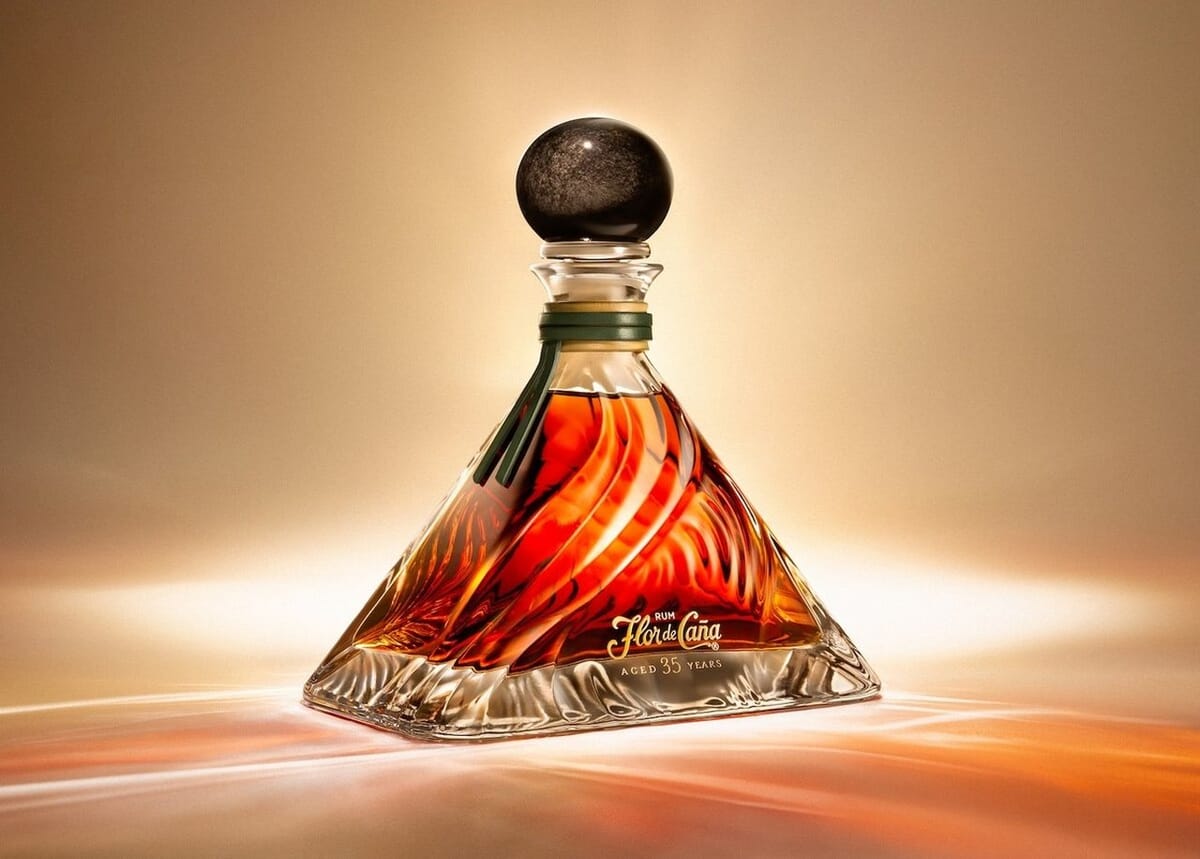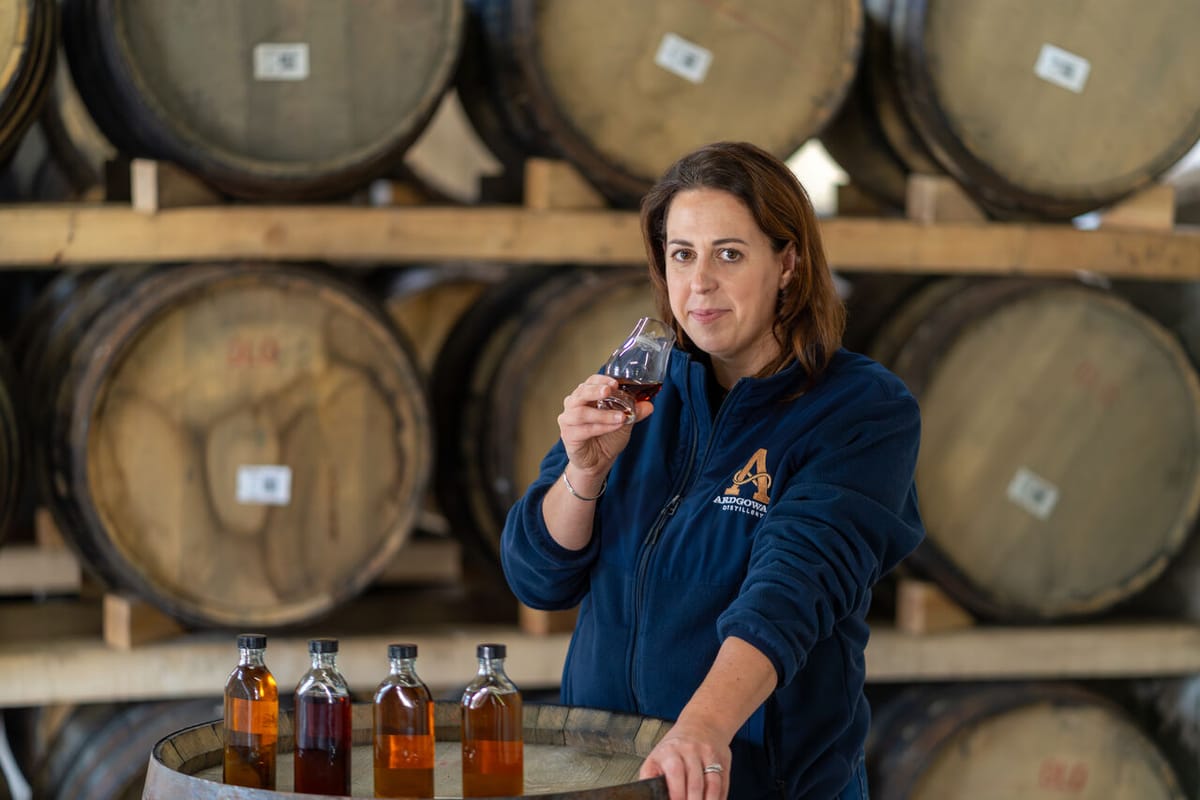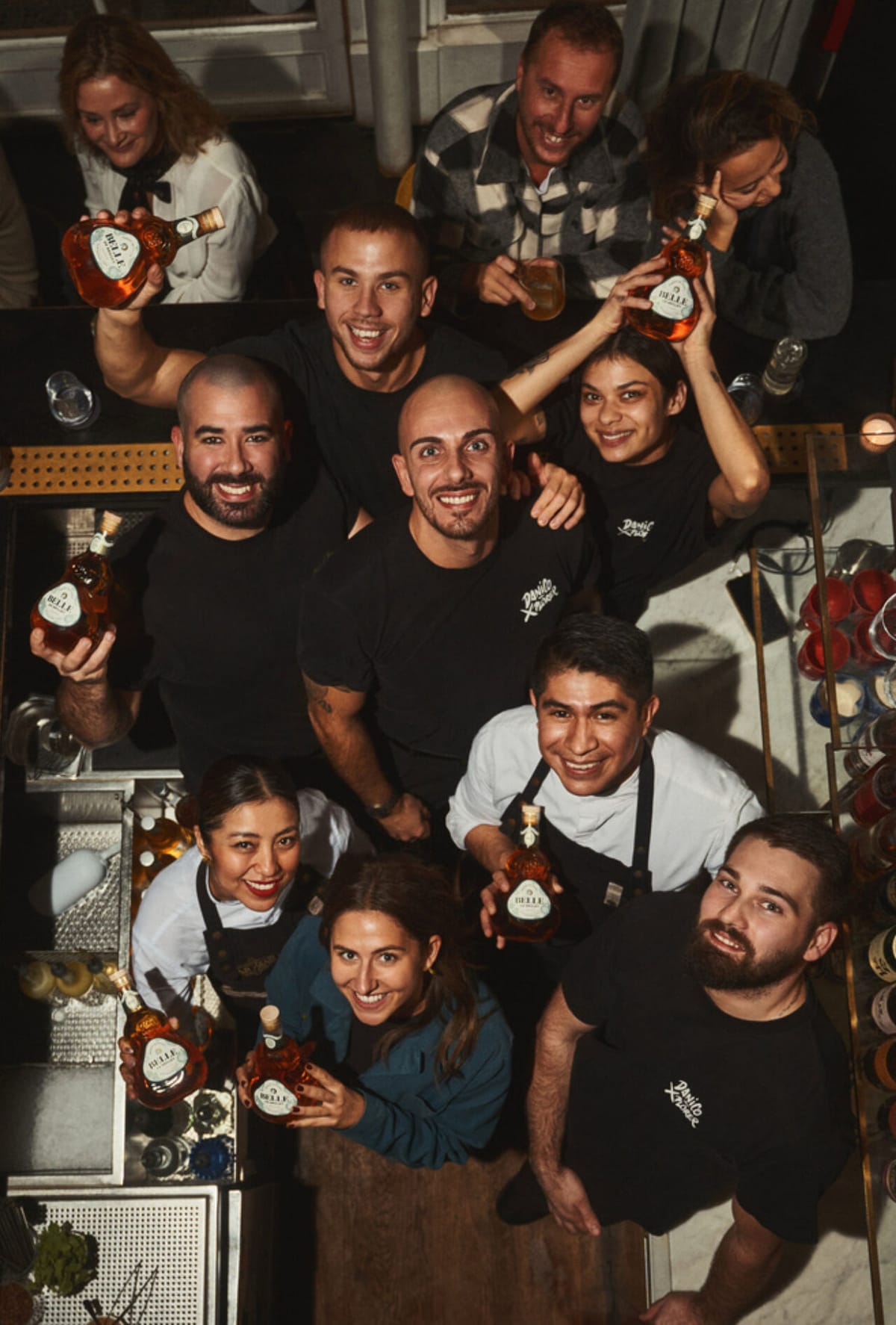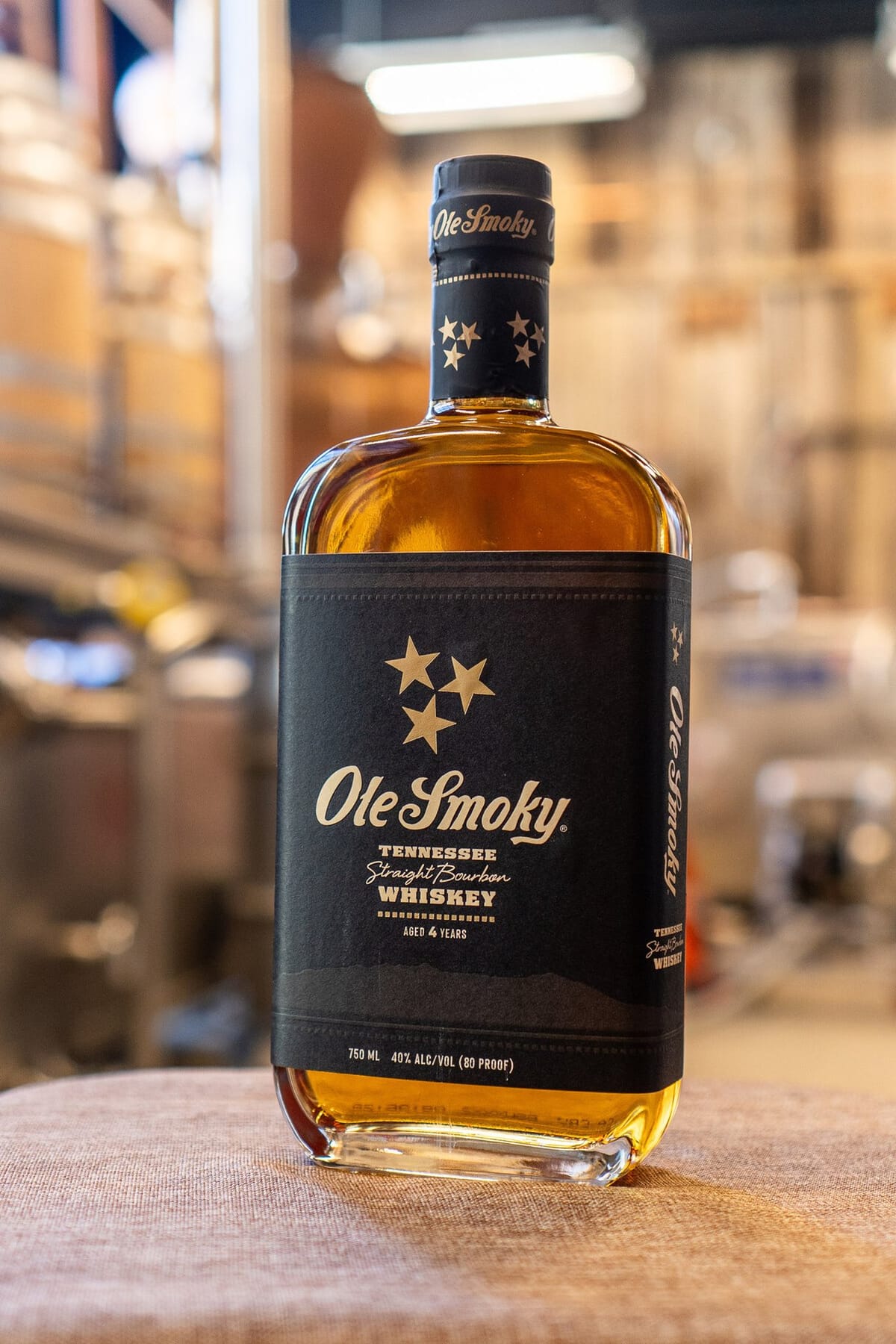The Moonshiner unveils a menu inspired by French terroir
Moonshiner has flown the speakeasy flag in Paris for more than a decade. With a new menu highlighting French terroir, bar manager Davide Piccone Casa explains its inspiration and previews what’s ahead: a classics menu and a refreshed whiskey selection.
A menu focused on French terroir
This menu pays homage to France. At Moonshiner, we have always had many Italian staff members, as well as people from around the world, and France is our host country. We’ve therefore focused on local ingredients and French traditions, and the menu will be a sort of guide where each cocktail is an itinerary, a stroll, or a journey to discover the twelve selected regions through one or two featured products. Our technical expertise allows us to make the most of each product to showcase the region’s specialties, its territory, and its traditions.
With this new menu, we are kicking off a series for the years to come. Since our overall concept is akin to a guide paying tribute to France, we can easily envision other variations, such as a menu inspired by specific cities, for instance.

Creation process of the Terroir menu
Nothing is easy in this world. Today, cocktails have truly become like dishes, and there’s a wide range of techniques involved. This menu took about four and a half months to finalize, as we really wanted to explore each featured product in depth.
Every team member is important when creating recipes: we share and solidify everything together. For the new menu, the guidelines were provided by two of my bartenders, and the rest of the team supported them through the development process. Of course, we held meetings to experiment, taste, and figure out what needed tweaking. There is no strict rule for finding inspiration, but when I was more involved in creation, being Italian, I liked taking inspiration from a particular dish.
In my view, task sharing is very important; you need to know how to delegate. A head bartender should not be involved in every minor aspect of the bar’s daily life, precisely because there are so many tasks to be performed. But, ultimately, for a cocktail to make it onto the menu, it must be approved by everyone.


Terroir Menu, Moonshiner (Paris)
The choice of an annual and conceptual menu
This new menu is intended to last a year. Since last year, that has been our policy, for two reasons: first, many customers want to revisit certain cocktails over a fairly long period; second, some recipes use ingredients that aren’t really seasonal—like Champagne or hops—and will therefore remain throughout the menu’s duration.
Of course, some drinks will be subject to seasonality, and we will have to adjust their composition. Ideally, we’d like to keep the overall structure and just replace the unavailable ingredient, but there’s no guarantee it will always work; some adjustments may be needed.
I took over at Moonshiner in 2018, and back then, the only theme of the menu was the division between cocktails with or without whiskey. Over time, we realized that customers wanted some guidance, that they liked being told a story when we explained the drinks. That’s when we started offering thematic menus, like the one inspired by Parisian bouillons. This change ultimately came out of a customer request, but now it’s also a useful way to spark our team’s creativity!

Still giving priority to whiskey in cocktails?
Moonshiner offers more cocktails based on whiskey—Scotch, Bourbon, or Japanese—than on any other spirit. It remains the bar’s signature. Previously, it was quite common for a customer to say, “Make me a cocktail, but not with whiskey, because I don’t like its taste,” and I would make a small wager by offering to make them a cocktail featuring that spirit anyway: if they liked it, great; if not, I’d replace it with something else. In 80% of cases, it worked.
This is part of our job: promoting new flavors. But I think that, in today’s global cocktail landscape, having a balanced cocktail is what truly matters, and the spirit now plays a secondary role.
Revamping the whiskey list to surprise the customer
Over the last two years, I’ve felt more interest among our clientele for cocktails rather than whiskey tastings. Perhaps that’s due to the success cocktails have had in our establishment.
We still have enthusiasts, so we are revamping the whiskey list. Today, as in other areas, customers want to be surprised, discover something different, and avoid drinking what they’ve seen a thousand times before. So, from the current 150 references, we’re going down to 50. Among these, there will be 30 permanent ones, which are well-known and rare labels, plus 20 that will rotate annually, ideally changing every Whisky Live.
Within this rotating selection, there will be five very rare or ultra-premium editions. My goal is to balance the current 80–20 ratio between cocktail drinkers and whiskey drinkers. When someone asks for the whiskey list, we always encourage them to request our advice to try a distillery they don’t know or haven’t tested yet. I enjoy taking a moment with a whiskey lover, talking about their preferences, letting them smell three or four of our selections. In short, being a good guide.
The upcoming creation of a classics menu
We will also be launching—likely in the near future—a classics menu, because we get asked for it often. These will be our own takes, meaning that we won’t change the cocktail itself, but many classics have multiple recipes. So, we’ll offer the Moonshiner classics menu, featuring around 50 drinks. We won’t add infusions or modify ingredients from the original recipe but will provide what we see as the best version of each. We’ve already done much of this work over the years, making notes on our reflections and observations concerning our preferred approaches.
On the new menu, aside from “the itinerary,” there will also be an “off the beaten path” portion featuring four barrel-aged cocktails. These are classics reworked our way, with revised recipes, including the famous Vieux Carré. It’s the only cocktail that’s been on the menu since the bar opened. Initially, it was pre-batched and bottled. Now, we age it in a small 10-liter barrel for at least two weeks. It’s an iconic drink that remains popular, though it fluctuates with the seasons. Personally, when customers ask me for a recommendation after their second or third cocktail, I often guide them toward this one, and it’s generally well-received.

Pizzeria and cocktail on tap
The idea, of course, stems from the speakeasy concept, with a pizzeria hiding the bar. There has always been an exchange between the bar’s customers and the pizzeria’s. However, in the past three or four years, the pizzeria has begun drawing its own clientele. Since I took over its management in 2020, together with the pizzaiolo, we have revamped everything for a more authentically Italian experience.
Moreover, for a few months now, I’ve installed a draft system for a cocktail on tap—a slightly adapted Spritz—which reinforces the Italian identity and is very practical, as the space is small and it allows us to offer an aperitif. Note that you can’t eat inside Moonshiner, but it is possible to bring bar cocktails into the pizzeria. The pizzeria does well, with about 100 to 120 pizzas a day, but obviously most of the revenue comes from the bar, since it is still a small pizzeria.
An Italian school of bartending?
It’s true that there are a lot of Italians in the bar world. Moreover, at the most recent Top 500 ceremony, which brought much of the cocktail bar community to Paris, I found myself surrounded by about 60% compatriots in one room! In my opinion, by nature, we’re welcoming and hospitable while maintaining professionalism and respect.
Why is that? I heard someone comment that it comes from childhood family celebrations. At Christmas or New Year’s, there are many guests at home. Everyone gets a bit stressed out with the preparations, yet you strive to make everyone feel at home. And, in the end, that shows up in our work.
I encourage all my bartenders, Italian or not, to talk with the customer—especially if they’re alone. Where are they from? What do they do? Why did they come here? And in fact, I’ve noticed that for an Italian, it comes naturally; I don’t even have to tell them to do it.
Lastly, Italy’s gastronomy is quite extensive: not only does each region have different dishes, but every town within the same region does, too. Owning that culture likely helps us in terms of creativity. One more aside: in the taste sphere, bitterness is the last flavor the human body learns to handle because in nature it’s linked to poison. But we handle it more easily; that certainly opens up new possibilities.
A look at the Italian cocktail scene: the virtues of dialogue among bartenders
The Italian cocktail bar scene has seen tremendous growth over the past six years. Quality has always been there, because many of today’s renowned cocktail bars, such as Freni e Frizioni, 1930, Jerry Thomas, and Antiquario, have existed for ten or fifteen years, but they had the good idea to collaborate and share recommendations with each other.
When I arrived in Paris, that was the case as well: bartenders would talk among themselves and swap recipes and discoveries with colleagues. Then it changed a bit and became more closed, similar to what I experienced in Italy. Fortunately, it seems to be opening up again. Rome and Milan are the two pillars of the Italian cocktail bar scene, and the Roma Bar Show is gaining recognition. The same approach happens internationally: at these types of events, we Italians often exchange contacts. I believe that’s the key reason why the cocktail bar scene in Italy has grown so much: that collaborative spirit of sharing and talking.
In fact, Moonshiner will be hosting guest shifts with some of these Italian establishments.

From Savona to Paris
I’m from a small town in the Genoa region called Savona—the birthplace of the citrus-based chinotto. Twenty years ago, I was in high school and one of my friends was opening his bar. I helped him build the place, and one day he offered me a side job. The creativity, the connection with customers: I was hooked right away and knew I wanted it to be my career. I ended up managing a cocktail bar, but since my town was quite small, I also continued my accounting studies as a fallback.
After that, I was offered a position running a cocktail bar and beachside restaurant. The project was fantastic and highly successful, but my working relationship with the owner wasn’t great. In 2015, I came to Paris for a vacation to see some friends. During that trip, I got job offers, so I moved here without speaking a word of French.
In France, the bartender job was already viewed as a genuine profession, unlike in Italy at the time. It took over my life completely: I started off as a barback, moving on to preparations, and gradually bar service as my French improved. Nowadays, our clientele at Moonshiner is more international, but nine years ago, speaking English alone just wasn’t enough.
I worked my way up: bartender, assistant bar manager, and now manager of the establishment. I also handle purchasing for the entire group (editor’s note: Liquid Corp, which also operates Dirty Dick, Louie Louie, and Oxygen La Défense). My managerial role has let me implement improvements. For example, I noticed that strictly separating the prep team from the service team kept both sides from understanding each other’s needs. That’s why, starting in 2019, I introduced the idea that everyone should do a bit of everything, helping the whole team grasp the bar’s entire operation. I’ve also established four shifts a week for the team: 10 hours a day, four days a week, and three days off.
Open daily, 6pm to 2am, except Friday and Saturday until 3am





